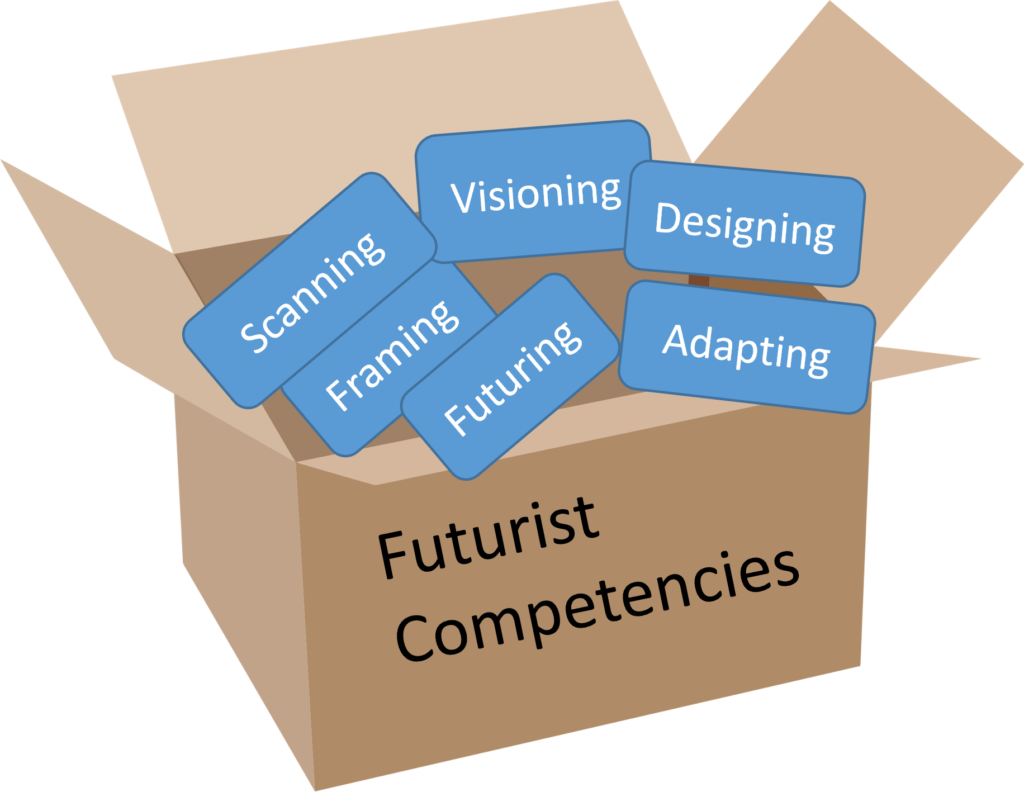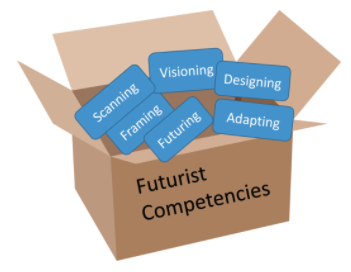 For a lifetime we have heard, and likely been advising, that we and our clients should “get out of the box.” In most cases this is sound advice. But may I offer a case where it might be helpful for us to “get in the box?” Methods. For my professional lifetime I have mostly heard that we futurists have a hard time agreeing on anything and how we do our work might be at the top of that list. Many celebrate and promote their unique approach to the future. Try it out. Ask 10 futurists how to do a project, and you will likely get back 10 different answers. On the one hand, having a wide variety of methods is surely a good thing, right? Lots of tools in the tool kit. I agree. On the other hand, it may suggest that we futurists don’t agree on how to do our work, particularly to those new to the field.
For a lifetime we have heard, and likely been advising, that we and our clients should “get out of the box.” In most cases this is sound advice. But may I offer a case where it might be helpful for us to “get in the box?” Methods. For my professional lifetime I have mostly heard that we futurists have a hard time agreeing on anything and how we do our work might be at the top of that list. Many celebrate and promote their unique approach to the future. Try it out. Ask 10 futurists how to do a project, and you will likely get back 10 different answers. On the one hand, having a wide variety of methods is surely a good thing, right? Lots of tools in the tool kit. I agree. On the other hand, it may suggest that we futurists don’t agree on how to do our work, particularly to those new to the field.
Getting in the box suggests that in addition to celebrating our differences (which we are good at), we also celebrate our commonalities (which we are not good at). It makes sense that we prefer differences. It’s a reason one is drawn to the field – to explore alternatives, to question the present, to imagine preferred futures. But this is a “public relations” challenge. For people new to the field, it may appear that we agree on very little. In the methods arena, for example, a few years back the APF produced a Foresight Competency Model (framing, scanning, futuring, visioning, designing, and adapting). It sought to identify a common core. Indeed, if you list the steps of many foresight methods, you’ll see that they typically incorporate many, most, or all of the foresight competencies. The differences are in how they steps are arranged, what is emphasized, and the particular special sauce that is used to carry out that step. In other words, there is still diversity, but it builds off a common core. We do agree … on more than we think, so let’s let the public know! – — Andy Hines

Leave a Reply